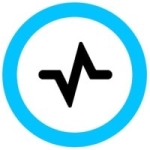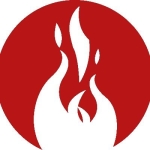What is our primary use case?
When we first got Dynatrace, it started just as a developer's tool. As we used it more and more, we started using it not only for applications but for hardware. Now we're using it for servers. it's evolved over time.
The use cases are monitoring, alerting, triaging, and for statistics and dashboards.
It's basically used to make sure that everything is running okay. You can check dashboards in each group. The DevOps group can use the dashboard and say, "This is how my code is working." So it's more peace of mind, and to keep things available, which is really important to us: availability and reliability. That's what it's being used for.
At product start-up, it was not very visible at first. But now, since people have actually been using the product, and they've actually seen the visibility and what it can provide, it's doing well. So that's why we're deciding to upgrade.
We've had the product for about eight years now. They started using it more and more, so the company decided to invest in it more and more.
How has it helped my organization?
Right now in an AppMon, when you have DevOps teams looking to see where transactions are going through from business transactions, and they want to set up measurements to see how things are. And dashboards - dashboards are extremely important now. Thresholds are important.
After today, at the Perform 2018 conference, I can say more because I can see, even though we're AppMon 6.5 now, and we're going to Dynatrace, I was really impressed with everything I saw. The fact that I was impressed, and I was seeing everything, what the future looks like, made us feel like we made the right choice as to what's going on.
What is most valuable?
Dashboards is one, troubleshooting is another. I come from the monitoring perspective, so the ability to triage quickly is important, and the ability to alert and tell people where the problem is, that's what I really like about the product.
What needs improvement?
I haven't had a chance to go through all of it, but I would like to see the ability, from an administrative standpoint, for it to collect statistics. I want to be able to see the servers that the agents are installed on. I want it to be able to start doing collections for me by platform: How many Linux servers do I have? How many Windows servers do I have? Statistically give me the information of how things are performing, but I want that in a dashboard, where I can look at a dashboard and I can look at a section. So the ability for me to drill down will make it easier for me.
For how long have I used the solution?
More than five years.
What do I think about the stability of the solution?
Ours is pretty stable, being that we have AppMon. We have collectors and DTs in there, they're load-balanced all over the place. And every now and then we have issues, but it's been pretty stable. It has to be, because it's being relied upon more and more. If it was not stable then management wouldn't say, "Okay, we're going to go this direction."
Stability is extremely important because when you're in my business, you need to have data available 24/7. If I have systems that take a hit, and I can't depend on my dashboard to pull up data, then that's a problem. And if they can't triage, then that's a problem.
We have encountered downtime. When we have downtime we look at it and say, "How quickly can you get it up?" The good thing is that when we had downtime, we also had load-balancing in place. If you have that in place that really helps out, because then you go from one to another. It doesn't mean that it wasn't down, but it wasn't down long.
We can't afford to be down, because being down costs money. Everything is equated to money, to some degree. If this tool is not available during this time, how much money am I losing because I can't triage it? How many resources am I using? We've had some downtime, but not much. Even when you do maintenance, it's done a certain way.
Nothing is 100%, but it's pretty reliable. It had to be impressive enough for our management to allow us to invest into it going forward.
What do I think about the scalability of the solution?
It scales pretty well. I'm from a pretty big company. The solution started out small and scaled out, because we have a lot of collectors.
We scaled up. The good thing is, that's where Dynatrace SaaS is going to come in, when you look at what it's costing us to maintain the hardware on-prem, and do the analysis.
Scalability: We're always building more applications. And the fact that we can get rid of a lot of hardware and run that tool is really important.
Scalability is really important with growth. You need something that can scale quickly and not have to go through this whole process. It's one thing to look at it and do an analysis and say, "Okay, I need to scale." But, it would be easier if you could look at something and put in a formula and say, "Alright, we can scale based on this." Or something that could tell us. "You're at a point where you need to scale," so that would help out.
How is customer service and technical support?
It's easier when you can get to a level-2. We've had guardians on site for a while. Because we've had guardians on site they made it easier for us to get to support. So we know how to navigate support.
From my perspective, support has been quite satisfactory, because it's not like we're a novice going at this. We understand, these are the people you need to talk to. And they recognize the urgency when you're calling. So, I feel comfortable with saying support has been pretty good for us.
How was the initial setup?
I wasn't involved in the initial setup, but since then we've upgraded so many times. The upgrade is pretty easy. Complexity comes in when you have to schedule things. If I have a DevOps team that's in prod, once we were able to actually cookie cut the upgrade process, it was easier.
It also depends on the different platforms you're dealing with. You're dealing with Windows versus Linux, and you have to inject code into certain places, that's an issue.
I'm glad when Dynatrace says they have a different agent, because I wasn't crazy about the agent, the way we were deploying it. Not only me, but you have people who are quite protective of their code, and if you've got to inject an agent, they're not really comfortable with that. But with the new agent, that makes it easier for me too. That's another reason I was happy, that's one of the things I asked about: How are we doing the agent? Even though we were automated, there were still some configurations. But with this new product, it seems like deploying agents is going to be awesome.
What other advice do I have?
I'm excited because I like the AI piece. I want to get rid of the thresholds piece. That's part of the excitement as to where we are going to go, because a lot of the conversation occurs when you have to say, "What's the real threshold based on the applications that we have?" We have over 500 applications, easily. Each one has its own behavior. Then everyone wants to discuss a threshold. Now, I'm thinking, with Dynatrace SaaS, we don't have to do that anymore. Bit it will be awhile before we get there.
AI is really important. We're on-prem right now for hybrid to go to the cloud. So when you have the numbers and trends based on what AI can do, it helps you along the way. I can run reports and see the things that I need that will satisfy my customer, that will make it easier for me. We are looking towards the cloud, we do have applications up there. It becomes a sizing issue, as far as what do you need, because you have to pay to be in the cloud. So AI is really important because it will not only help us troubleshoot, it will actually predict some of the things we need to help us get there. I can't put a number on the importance of AI right now.
It's going to change a lot of analysis and things that you have to do. The one thing I would like to see is what's involved in setting up the AI. Because I'm excited about it, I want to see what's involved in setting it up, and see that component.
Regarding siloed monitoring tools, portability is one of the challenges. Siloed monitoring tools make it really hard to port out to other places. You get data, but you can't necessarily use it as far as fitting it into other areas. That's the problem with siloed monitoring tools. If you're good for that scope then you're okay, but when it's time to go beyond that scope... Going enterprise-wide is important. So, where siloed monitoring tools were okay at the time, they're just not keeping up what's going on now. The monitoring field is evolving. It's more than about just monitoring. Monitoring is one thing, alerting is another thing. But the AI part puts it together, makes it easier, not only for you to do your job, but the self-healing piece that goes with it. That's really exciting, when things can self-heal and then just report on it. That makes life a lot easier.
If we had just one solution that could provide real answers, and not just data, the benefit would depend on how you look at a benefit. First of all, we would be more efficient. However, I'm not sure if it would help from a resource standpoint, because then I'm not going to need all those resources, if I have a tool that's going to do everything I need. But, it would help in the sense that, if I can resolve something like that, and things fall into place. That would greatly help. And not only that, then I could just depend one tool. Right now, people look at a solution as, "I need a tool for this, and a tool for that." But if I can move towards one tool that will provide me everything I need, then that would be great.
Our most important criteria when working or selecting a vendor: Of course, there's always cost. Stability is another. The amount of time they have been in the market. Then we do a PoC and see if they can meet the use cases that we have. We have a standard, some 125 use cases that we put out there. We see they perform based on those use cases. It's completely agnostic. I don't care who the vendor is. Can they meet my use cases? Do they have stability? Do they have the reputation? And then we negotiate cost.
Right now, the solution we have in place, I would give it about an eight out of 10. Things are changing, technology needs to change. It's been doing a job, but I mentioned the things I asked for. I'm looking for more, so that's probably why an eight. It's doing the job, but I'm looking for it to go further.
They have a new product that's going to go further, so that's how we do it. Now, the new solution, I'm not sure how we're rating it yet. I have to see what it's going to do.
But would I recommend it? Yes. Because we have the experience, it has done this and this for me. Can I depend on it? Yes.
If a colleague at another company was looking to implement a similar solution I would need to know they were looking for before I could advise them. I would tell them from my perspective, this is what the tool has done for us. If they ask me the questions, I'll tell them exactly what I think. At this point, would you recommend this solution? Sure, because it does this for me. If you're looking into looking at code, at that part, yes it does that for me. If you're looking for monitoring, yes it does that for me. I would recommend it.
Disclosure: I am a real user, and this review is based on my own experience and opinions.
















